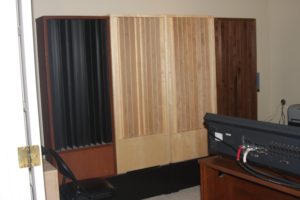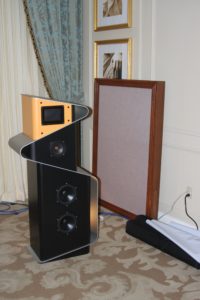Where Do They Go?
Once you built have your Broadband diaphragmatic absorber, BDA , Foam Cabinet, FC, and QD-11, quadratic diffusor, you are ready to start the positioning process. And it is a process, have no doubt about that. It will take some time and effort to get it right.
Positioning Process
You will position your units in certain ways and then you will listen. Not just for one session, but for many. Each product will change the sound in your room. First, we are assuming that you know how your room sounds now. Secondly, you also know the issues you are having. Finally, we take the appropriate product and place it in the correct place to help resolve the issues you do not like. With your new products in place, other issues will arise and we can address those for you, one on one, in our tutorials. This room tuning is a process where we position, listen, and reposition over time and music sources and adjust our units until all issues are resolved.
DIY – BDA – Broadband Diaphragmatic Absorber
For those that are building the BDA unit for low frequency absorption, we want to position the units, yes, you will need more than one, in the corners of your room to start. If you are building two units, place them in the corners that are behind your speakers. This will tighten up your bass response and provide more definition to bass notes. There are other positions that will improve your low end performance. Sign up for our one on one tutoring designed to find these issues in your particular room and solve them.
DIY – QD – 11 Quadratic Diffusor
The ORD -11 unit is a diffusor to use for reflection control. To start your positioning process with it, you should place 2-4 units across the rear wall. This will prevent that rear wall time delayed signal from reaching your listening position and mixing with the direct sound of your loudspeakers. Want to learn how to make your particular room sound larger and make your room walls “disappear” using your new diffusors? Sign up for our one on one tutoring.
DIY – FC Foam Cabinets
The Foam Cabinet builders can position their units, two at a minimum, on both side walls to control lateral reflections. Using your Foam Cabinets on the front and side walls and diffusion on the rear, will produce the famous live end / dead end set up used by most recording studios. To find out more positioning options that will address your particular room needs, consult us at: info@acousticfields.com.








